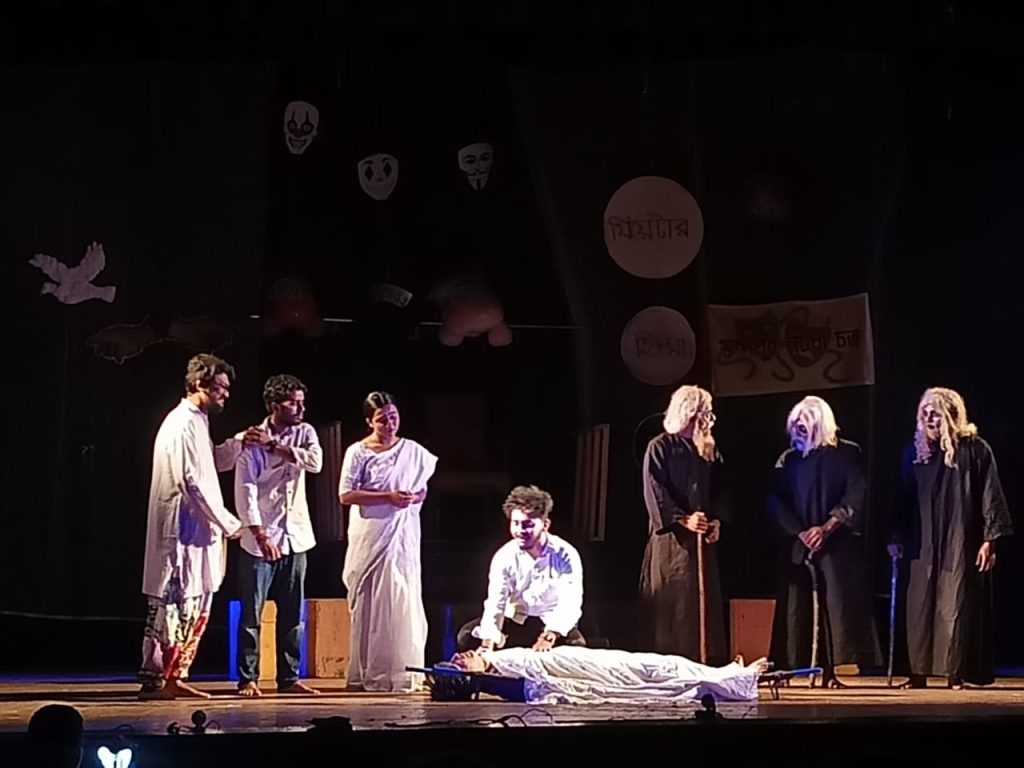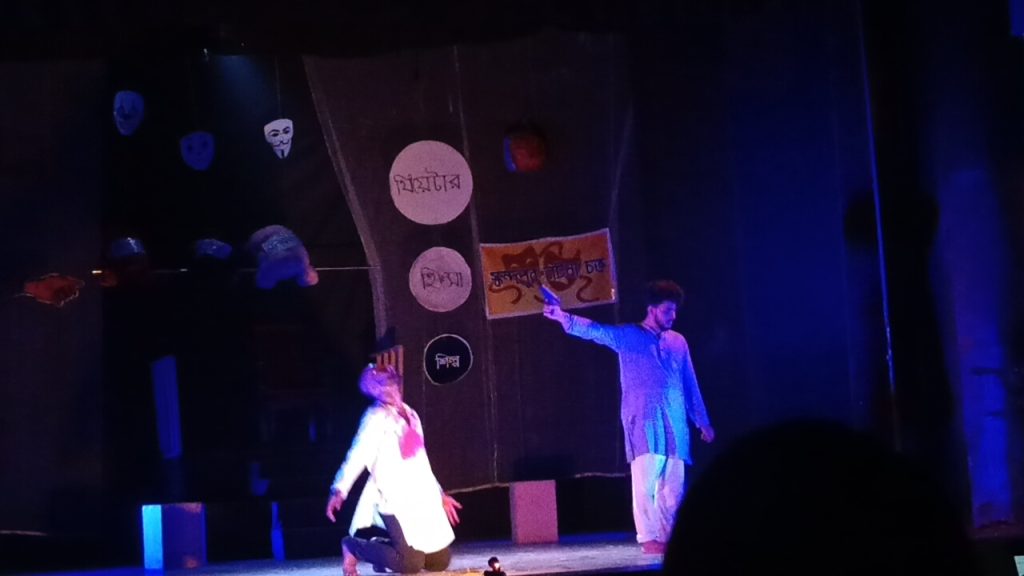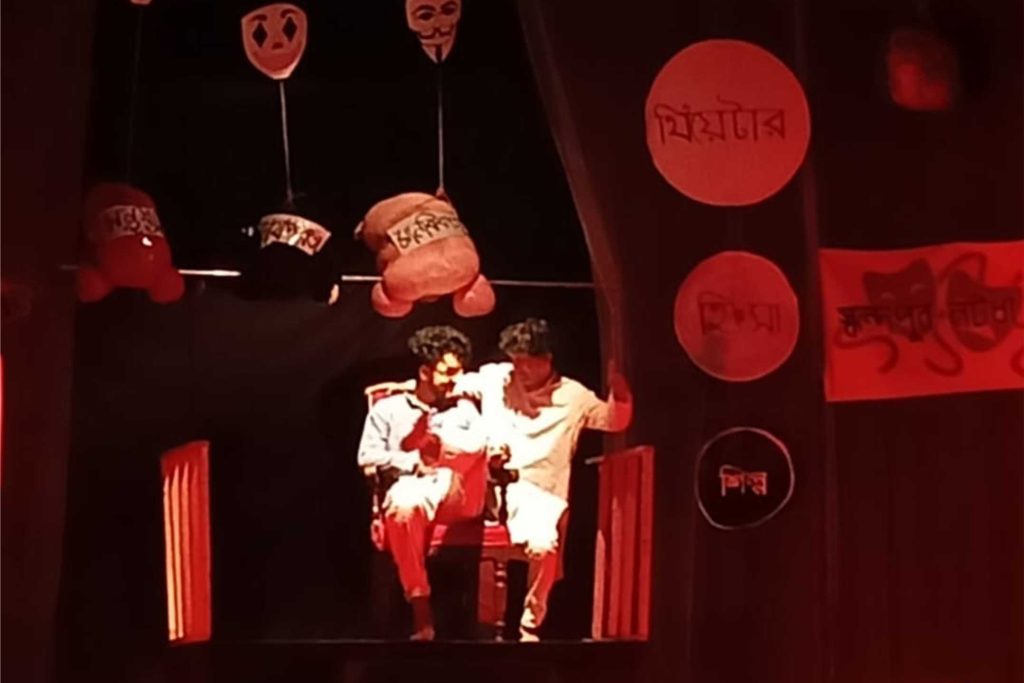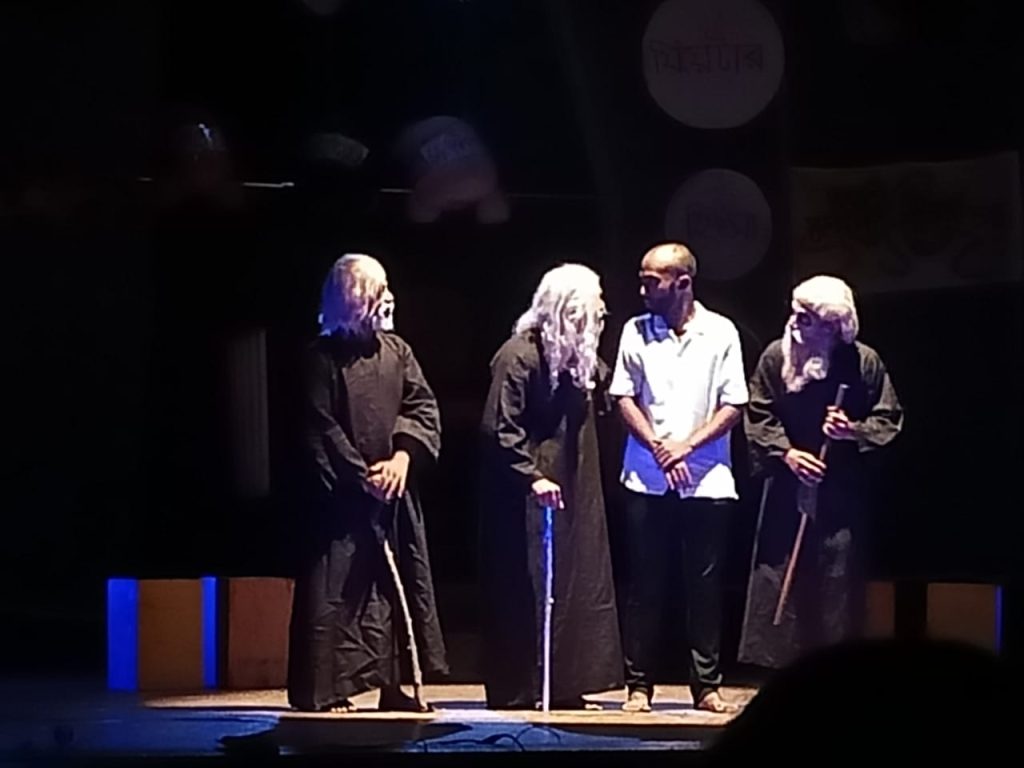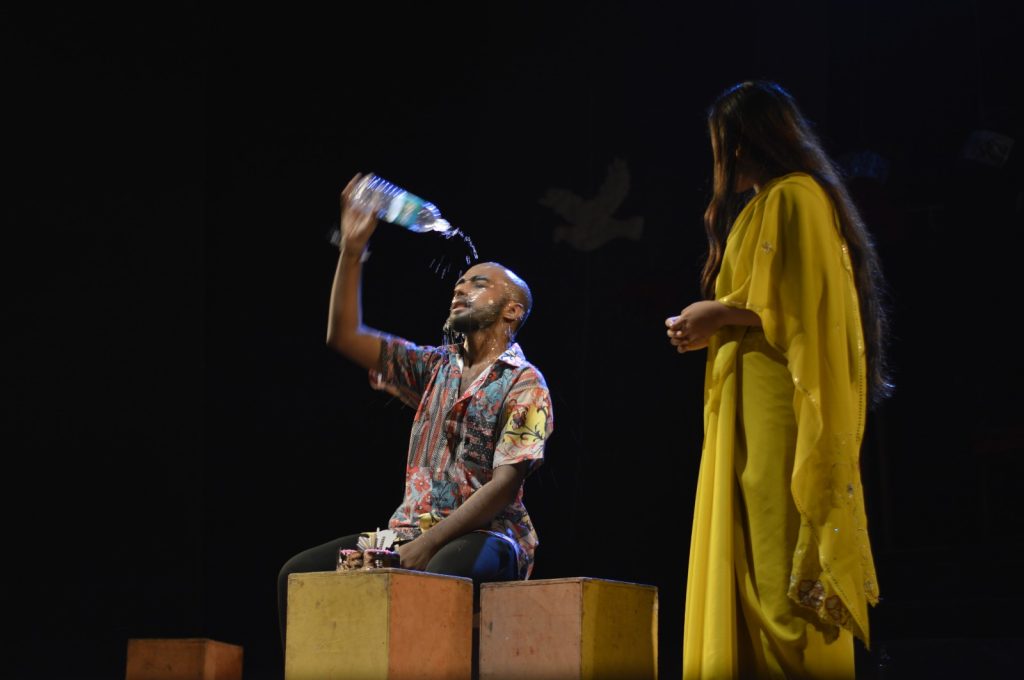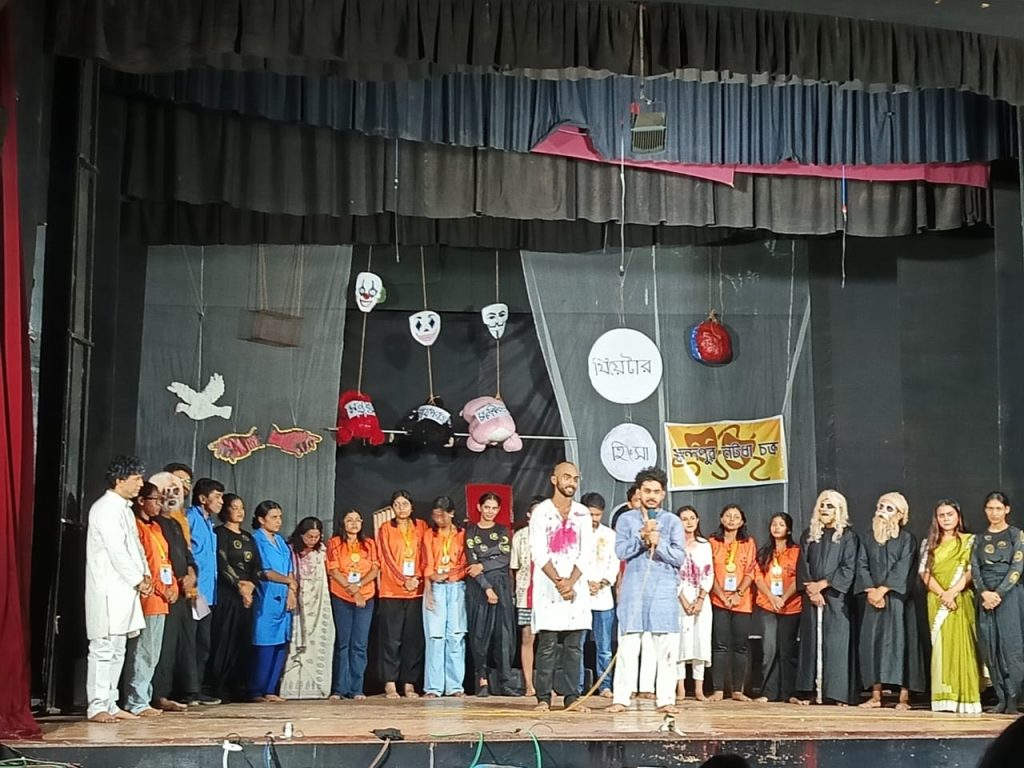‘Makaranda’ – A contemporary Bengali adaptation of William Shakespeare’s Macbeth
Shankha Bhattacharyya
The play is a contemporary Bengali adaptation of William Shakespeare’s Macbeth, set in the decaying world of a dying theatre troupe in a small town.
In the faded yet determined world of Skandapur Natadha Chakra, a once-celebrated Bengali theatre troupe teetering on the brink of obscurity, a long-absent actor —Makaranda (portraying the character of Macbeth) — returns. Passionate, gifted, and restless, his re-entry into the troupe sends ripples through the fragile dynamics that hold the ensemble together.
Makaranda’s return rekindles old relationships and reignites buried tensions. He confronts Lahari, his former lover; Maloy (portraying the character of Macduff), his childhood friend; the eccentric comic actor Bandhan; and Bandhan’s mute, neurodivergent half-brother Phali. At the centre of this decaying universe looms Dhananjay, Maloy’s father and the aging patriarch of the group, whose artistic authority is soon threatened by Makaranda’s charismatic resurgence.
It is then that the play takes a surreal turn. The Three Amits—enigmatic, otherworldly figures—arrive with a cryptic prophecy: Makaranda will one day rise to lead. This vision ignites within him a hunger for power that quickly mutates into obsession. The stage becomes the battleground between performance and reality, and the line separating them begins to dissolve.
In a grotesquely theatrical moment, Makaranda murders Dhananjay. He claims power, dons his symbolic yellow spectacles, and silences opposition—first Bandhan, and eventually Debashmi, Maloy’s sister and Makaranda’s last emotional tether. In a shocking act of desecration, Makaranda violates Debashmi’s corpse—marking his complete descent into moral and psychological collapse.
Haunted by guilt and plagued by hallucinations, Makaranda spirals into madness and attempts suicide. In the final act, Maloy, once friend and now avenger, kills Makaranda. As a grim coda, Maloy also murders Makaranda’s mother—using the same silver knife that had first spilled blood.
The production featured a diverse and talented ensemble of performers and an efficient creative team, Makaranda Chatterjee (Akash Biswas), Dhananjay Goswami (Samarjit Das), Maloy Goswami (Bedadyuti Das), Lahori Sanyal (Pratyusha Roy), Debashmi Goswami (Mehli Das), Bandhan Patra (Pranoy Patra), and Phali (Granthan Das). The three incarnations of Amit were performed by Amit Sultania, Abhay Dutta and Pritam Mallik.
The other characters like Valmiki Das (Prosenjit Sur), Mother (Soma Das), Arjo (Jayatu Dutta), Nurse (Ankita Pal), Hospital Staff (Udayan Chakraborty), and Dancer (Triparna Pal) left their marks on the stage. The roles of the Hyenas were played by Anwesha Talukdar, Ananya De and Triparna Pal.
This production stands as a testament to the collective brilliance of a passionately driven young creative team.
At the helm of direction, Bedadyuti Das and Akash Biswas offer a vision both precise and emotionally expansive, navigating the play’s psychological terrain with insight and control. As playwright, Akash Biswas crafts a script that fuses classical tragedy with contemporary resonance, grounding ambition and decay in the world of struggling art.
Mehli Das’s choreography imbues the performance with a kinetic poetry—her movement design elevates silence into speech and gesture into meaning. Meanwhile, Bablu Sarkar’s lighting design and execution masterfully shape the emotional landscape, pulling the audience through dream, memory, and nightmare.
The subtle makeup artistry of Amit Chakraborty ensures that characters visually evolve with their inner disintegration. Set design and construction by Ankita Pal and Anwesha Talukdar anchors the surreal world in tangible space—expressive yet minimal, decayed yet defiant.
Sound is another powerful presence in the production. Akash Biswas and Mehli Das, as sound designers, layer sonic textures that echo the play’s descent into psychological chaos. Their intricate score is executed by Pritika Das and Aishi Upadhyay, whose seamless sound operation ensures that every emotional beat lands with impact.
Together, this team has not simply staged a play—they have created an immersive world. A world where ambition devours art, where madness finds its stage, and where performance mirrors the grotesque theatre of human desire.

